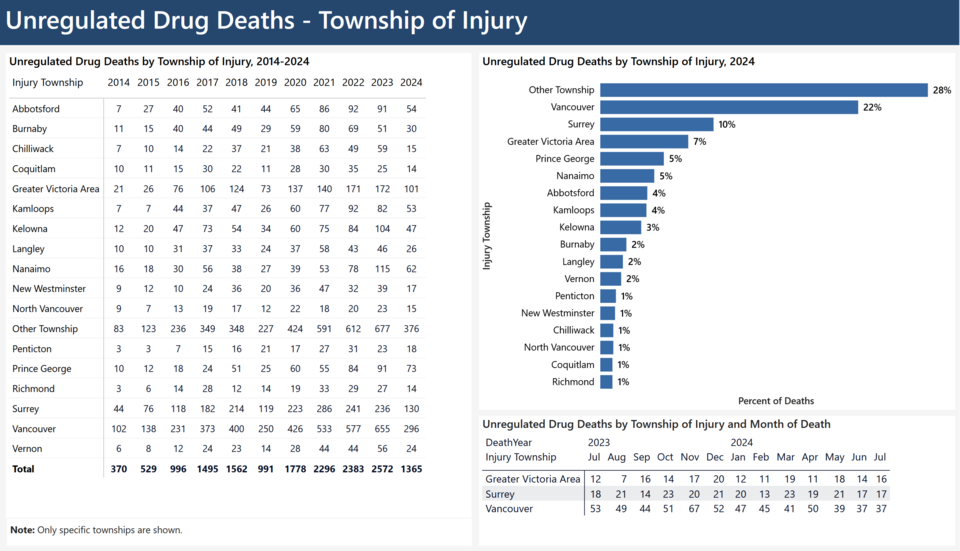Toxic drugs killed 192 people in B.C. in July and five of those deaths happened in Prince George.
So far this year, at least 1,365 British Columbians have died from the unregulated drug toxicity, 91 of which were in Prince George, according to a report issued Friday by the BC Coroners Service.
Of the six health authorities in the province, Northern Health continues to have the highest toxic drug death rate – 5.9 deaths per 100,000 people. The average per health authority is 3.4.
For the first seven months of 2024 the death rate in the Northern Health region was 75.7 per 100,000. Vancouver Island was the next deadliest at 53.4 per 100,000.
The greatest number of deaths in 2024 have been in Vancouver (296), Surrey (130) and Greater Victoria (101).
“Unregulated toxic drugs continue to cause more loss of life in British Columbia than homicides, motor vehicle incidents, suicides and natural disease combined, tragically equating to about 6.2 people losing their lives each day,” said Dr. Jatinder Baidwan, B.C’s chief coroner. “The unregulated drug market is volatile and continues to put people's lives at grave risk each month.”
The B.C. total for July 2024 represents a 15 per cent decrease from July 2023 when there were 223 deaths. The annualized rate of death so far this year is 41 per 100,000, compared to 2023 when the rate was 46.6 per 100,000 and there were 2,572 drug deaths in the province.
The data from July 2024 represents a 15 per cent decrease from the number of deaths reported in July 2023 (226). The annualized rate of death in 2024 is 41 per 100,000 residents, which is less than the annual rates from 2021 (43.9), 2022 (44.5) and 2023 (46.6).
"Tomorrow (Aug. 31), we mark International Overdose Awareness Day,” Baidwan said. “To the loved ones of the approximate 15,140 British Columbians who have lost their lives to drug toxicity since this public-health emergency was declared in 2016, I extend my deepest condolences.
“These losses impact people far beyond our province, and we must not forget these are sons and daughters, parents and grandparents, co-workers and teammates.”
Eighty per cent of the unregulated drug deaths were males and fentanyl was detected in nearly nine out of every 10 cases. Smoking is the primary mode of consumption (64 per cent).
Provincial data gathered in 2024 showed that 48.2 per cent of deaths happened in the overdose victim’s private residence, 28 per cent were in other residences, 17.9 per cent were outside, 2.7 per cent were in a public building, 0.7 per cent were in a medical facility, 0.4 per cent were in a police cell or correctional facility, and 0.3 per cent were on an industrial work site.


